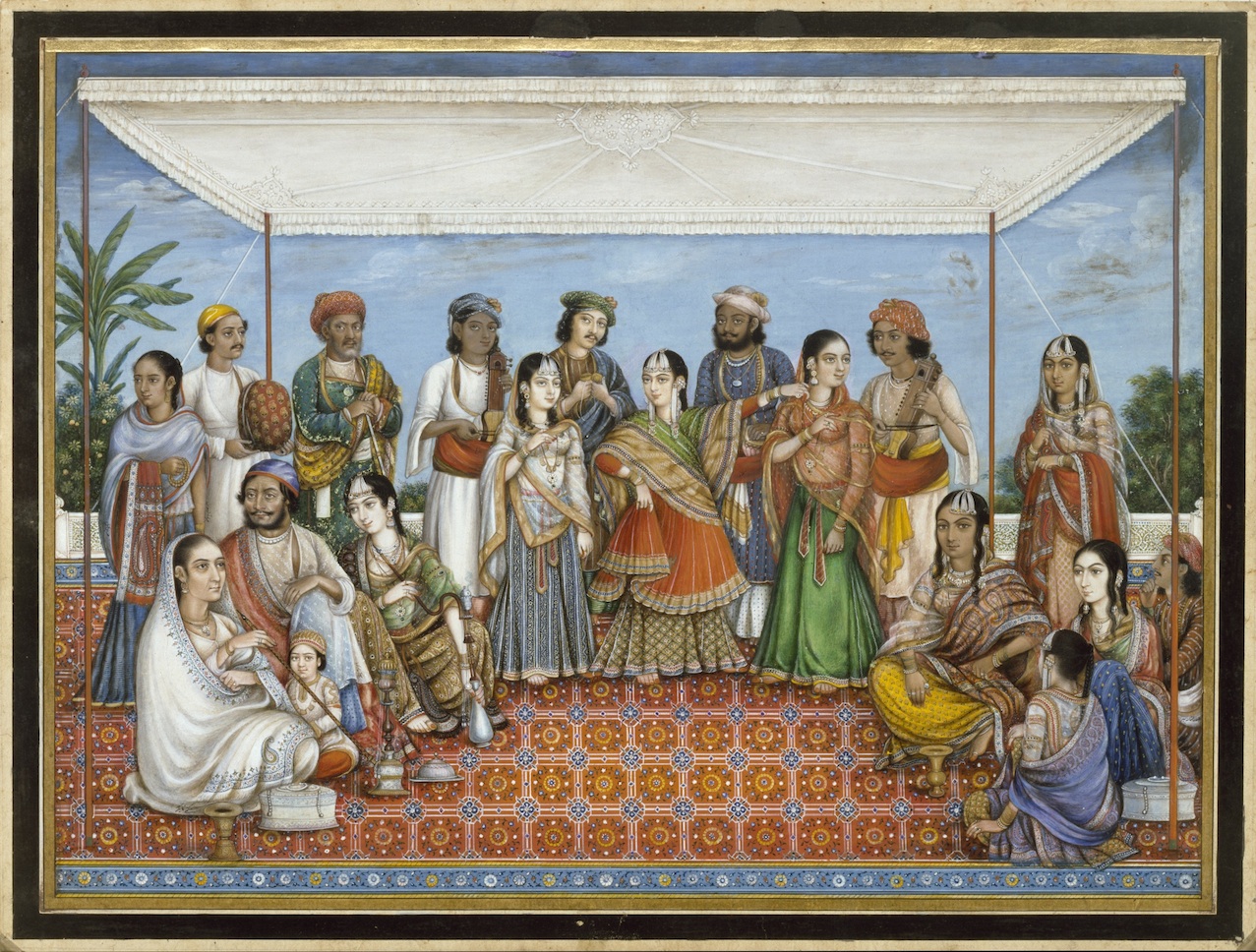This is a painting in gouache on paper by a now unknown Indian artist of the tawa’ifs, musicians and officiators of the household of Colonel James Sikander Sahib Skinner painted in Delhi in the third decade of the nineteenth century. Among the finely decorated performers present here are three nautchinis, or dancing girls, likely to be tawa’ifs or hereditary courtesans, two vina players, a tabla player and a cymbal player. Other attendants prepare a hookah and possibly paan. The canopied enclave placed before a jaali screen and herb and fruit garden is a Mughal-derived setting for dance performance. The same Mughal tradition of courtly display accounts for the richly embroidered carpet being painted flush against the picture plane and the encyclopedic differentiation of cloth, jewelry, gesture and social duty also owes much to pictures of Mughal rulers and their viziers immersed in the entertainments which symbolized their enlightened, self-evident, worldly, cosmopolitan, claims to governance.

